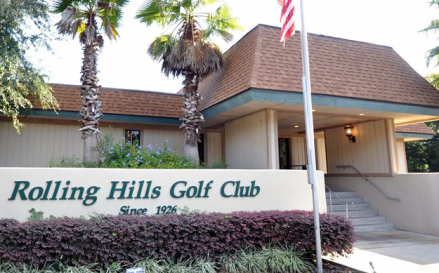
Rolling Hills Golf Club was an 18-hole golf course established in 1926, with over 6,230-yard course in fairways. It was first known as Sanlando Golf & Country Club or Sanlando Springs Golf Club. It was renamed Roling Hills Golf Club in 1959. The semi-private club was well-regarded by golf enthusiasts as being fun, unique, and challenging. They said it had an old-world kind of charm. The club featured amenities such as an excellent restaurant, locker rooms, and a Pro shop. Activities provided in the club include a kids’ program offered in the summer and lessons year-round. There was a swimming pool and billiard table at the country club.
The land around the course had previously been a pine forest utilized by the turpentine industry. It was first settled by Dr. Washington Kilmer in 1872. He built a home there, set up orange groves, served as the county’s first doctor, and named the area Altamont (no “e”).
Calvin O. Black and the Sanlando Springs Corporation founded the course and broke ground in early 1926, and opened by the end of the year. Black and Dow George designed the course and Art Millea oversaw construction.
When Black opened the course, there was no Highway 434, Longwood-Sanlando Springs Road was a dirt trail that sometimes flooded near Island Lake. Most visitors would arrive from the Dixie Highway (17-92) to Altamonte Springs and then taking the clay road (now Palm Springs Drive) to the course. During the late 1920s, a large golf equipment factory was opened in Longwood and a small hotel and restaurant called the Golfers Inn. It was boasted Longwood was bound to become the golf capital of Florida!
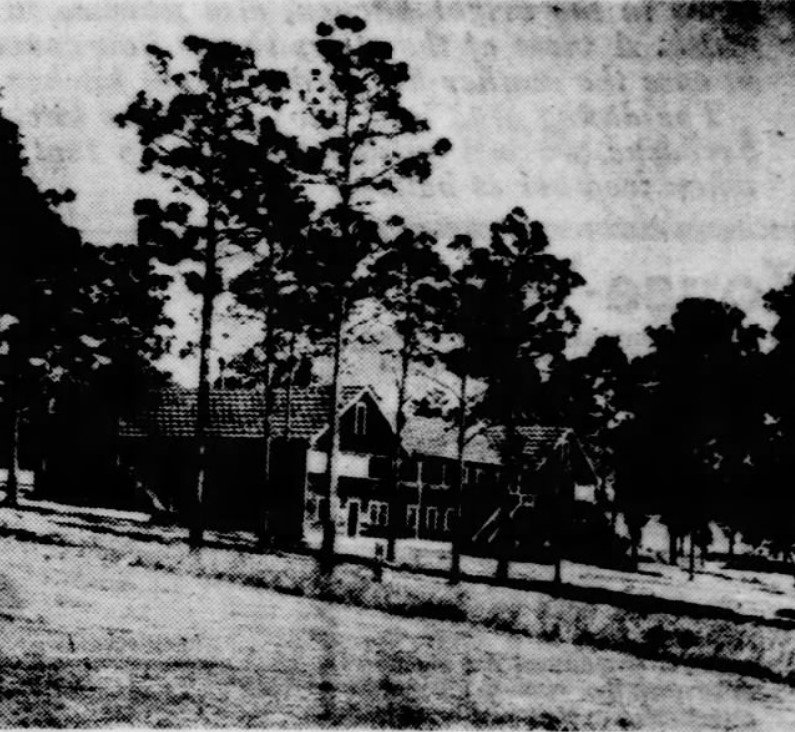
The lakes around the course were named for female family members of the founders. Lake Jeannette is named in honor of Cavlin Black’s wife. Other lake names are Phyllis, Loll, and Elaine. The namesakes of those need more research.
Home lots around the course went for sale in the late twenties, and many were sold to northerners. At first, there was a frenzy of sales, but after the Land Boom went bust, home values were cut in half. A home in the subdivision, with an acre of land, could be had for $1,250. After the stock market crash of 1929, the developers ran into financial difficulties and paused new home sales completely. Lots could barely be given away during the 30s.
Even in the early years, the course was considered remarkably designed. It had a unique landscape with its rolling hills and many lakes. Its property was sprawling and fairways meandered through woods and water, not parallel to each other like is common with others. It was renowned and hosted professionals such as Robert Allan Cruickshank, Gene Sarazen, and Walter Hagen.
Lifetime memberships were offered in 1926 for $345, and daily greens fees were $1. During the Depression, in 1934, the greens fees were reduced to 75 cents and eventually 50 cents. Season membership was just $10.
After the property changed hands a few times, Robert Bruce Harris of Chicago purchased the course from B. L. Maltbie of Altamonte Springs and Overstreet Land Company in December 1940, with investment also from his brother Frank. They bought the course and a total of 260 acres. Robert was a nationally known landscape artist and promised to revive the neglected former gem.
Harris said, “the course is potentially the most interesting test of golf in the state.” He promised to fix up the dilapidated course saying, “The course has been allowed to run down for the past few years, but I already have 14 men working on the course, and I sincerely believe that it will be just as fine a course as human hands can construct when we are finished.”
The property included a clubhouse with a pro shop, bar, and locker room. During that era, visitors from up north could fly into nearby Longwood-Slade Airport, just north of 434 from the course to vacation and play at the club or stay for the winter months.
The financial venture quickly went south for the Harris brothers. After a few false starts, it was closed in late 1941. The clubhouse burned down in 1943. It remained closed throughout World War II, and was left to nature to take back over. It became used for cattle grazing. It was virtually unrecognizable as a golf course. In 1951 the entire property, including the course and 800 home lots, was put on a firesale for just $10,000. Harry C. Hutchinson purchased it without plans to redevelop it, knowing it was a bargain.

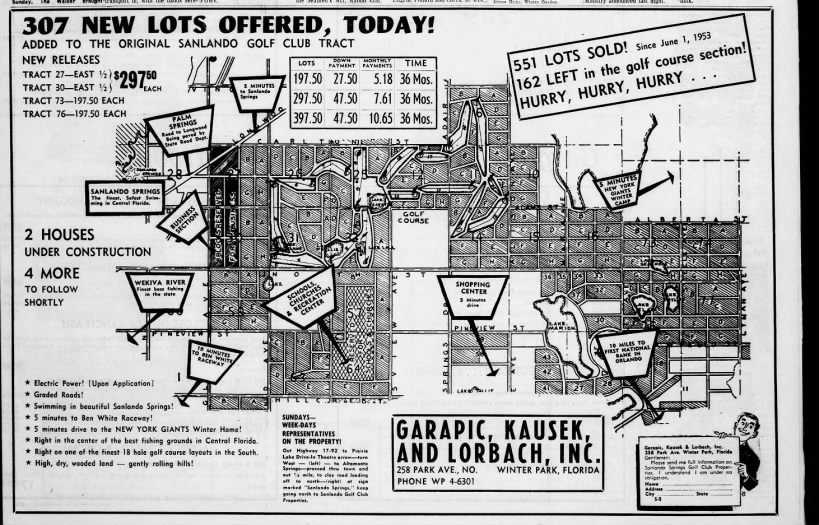
Two years later, Hutchinson sold the 320-acre tract for $24,500 to developers Garapic, Kausek & Lorbach, Inc. In December 1953, the company paid $48,000 for another 90 acres adjacent to the course owned by Col. James E. Matthews, part of the former Frank Haithcox-owned “Sanlando, Suburb Beautiful” subdivision that still sat undeveloped. It was subdivided into 480 lots with about 10 acres of orange groves. Weeks later, they added another 45 acres nearby, purchased from Leonard and Charles L. Button for $4,500. Their ambitious goal was not only to rebuild the golf course but to develop an entirely new city called Sanlando Springs.
The firm immediately started on a year-long restoration project. They bulldozed the overgrown land and updated the course design, constructed again being overseen by Millea. Home sales were reopened in 1953. The first 200 memberships were offered for $200 and the next 200 for $400. Dues with access to the clubhouse and locker room were another $145 per year. They planned to limit the course for members only most days, with limited public days. The investors announced they’d put $80,000 into course restoration and $45,000 to rebuild the clubhouse with plans for another $80,000 in future expansion, including a swimming pool. It was even suggested they would add riding stables and horse trails.
They advertised its reopening to be October 1, 1954. However, membership and home sales did not go as briskly as anticipated. By April 1954, the over-extended developers offered home lots for sale in bulk at auction. Renovations to the course stalled, and Garapic Inc. started shopping the unfinished course to new investors.
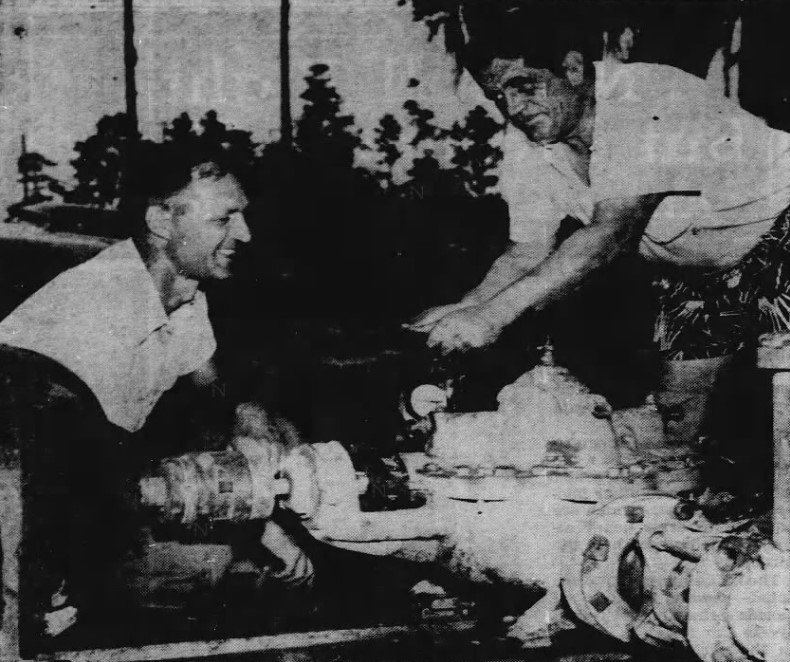
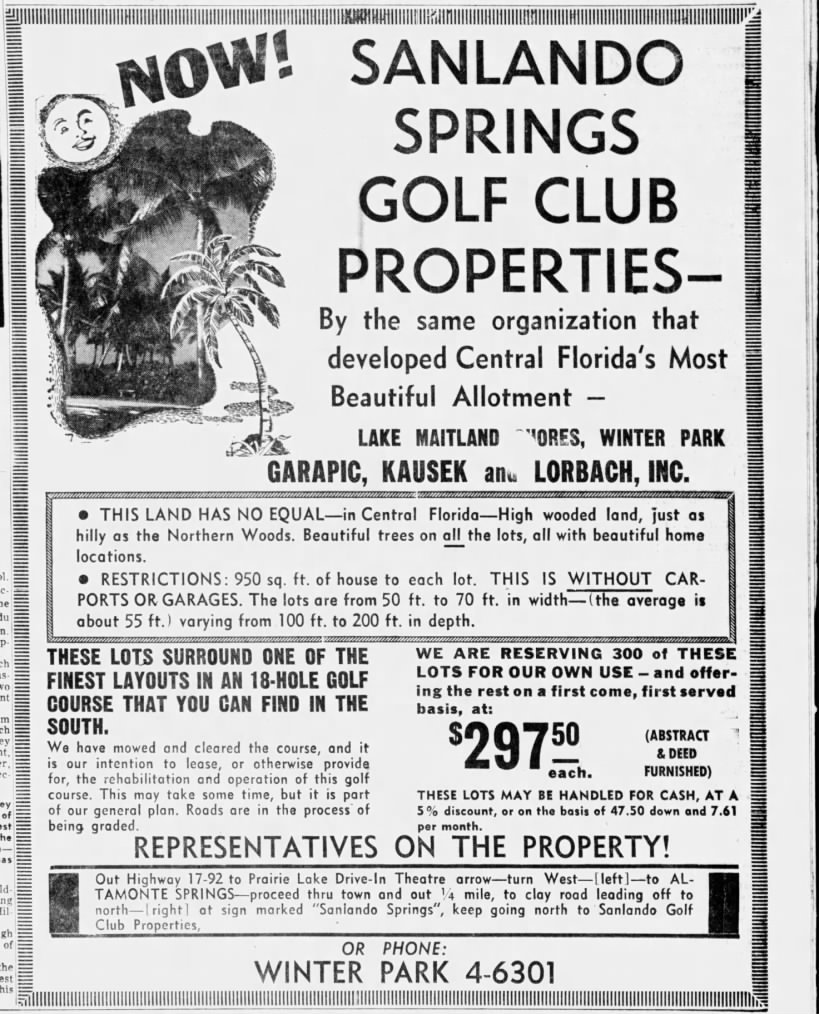
Chicago salesman Arthur Hagan answered the call. He acquired 129 acres of the property from Garapic, including the course, in 1955. The 50-year-old invested a lot of money to restore and redesign the property. That year, he constructed the two-level clubhouse with a sundeck, dining room, lounge, pro shop, and locked rooms. He brought his brother Ed Koening with him. Both left their jobs up north to pour the latter working years into the country club. One of their biggest projects was digging a well and running pipes for the sprinkler system to keep the grass pristine. It was reopened for play by December 1955 after almost 14 years of being shut down.
Hagan was a long time golf enthusiast and sold golf equipment. “It has always been my ambition to own and operate my own golf course. I’ve been coming to Central Florida off and on since 1938. A golf architect friend of mine, Bruce Harris, told me about the Sanlando course. Tom Fuller, president of the Orlando Country club, is an old friend of mine from Chicago. He showed me this course and right away I saw the potential.”
The Garapic firm still eventually benefitted. They held on to many of the surrounding properties, which increased in value after Hagan reopened the club. These became many of the surrounding subdivisions. Gary Garapic even leased the course from Hagan starting in 1957 and managed its operation for some years. The clubhouse was expanded, and electric carts were purchased that year.
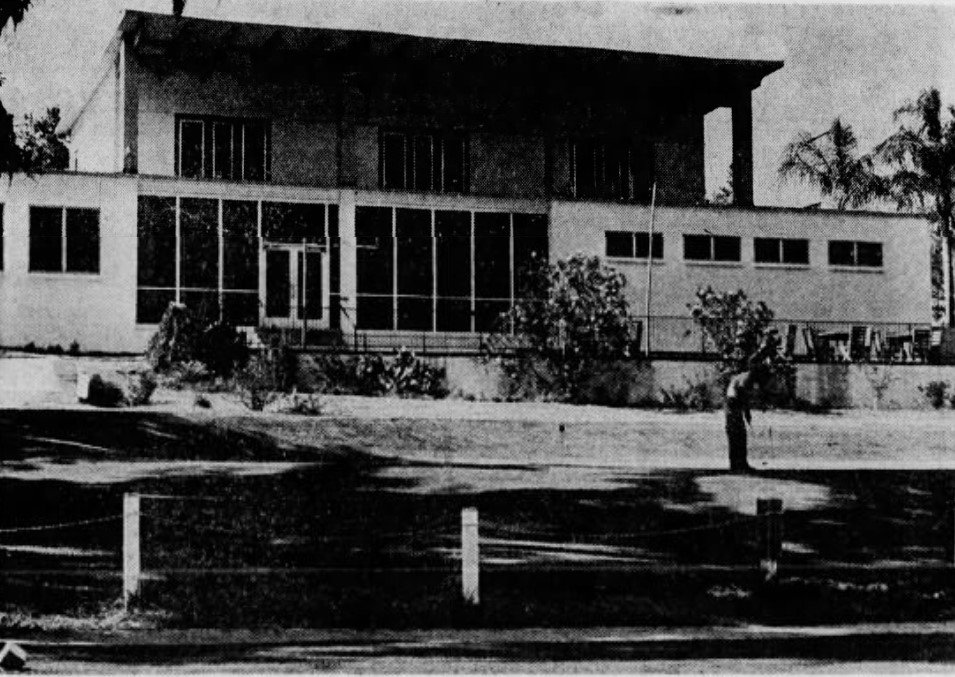
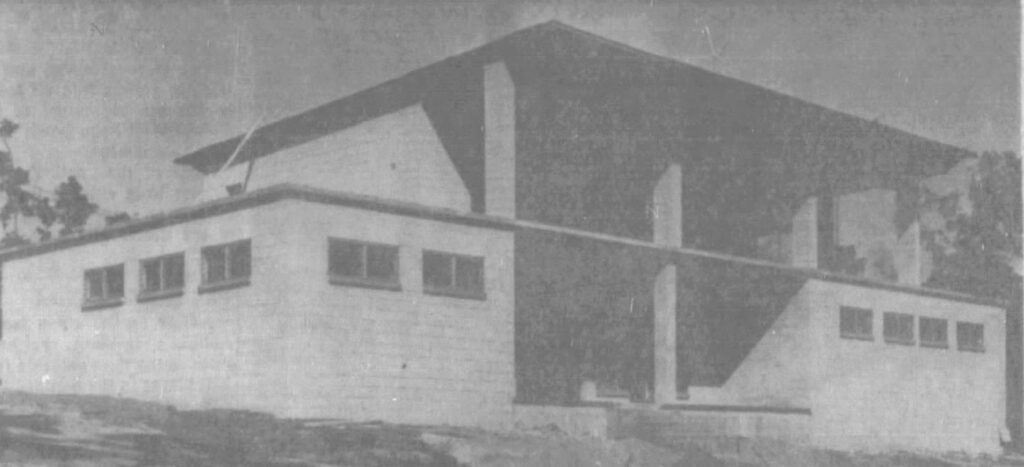
Hagan rebranded the course Rolling Hills Golf Club in 1959. It hit its heyday and became popular with golfers and home buyers. Hagan offered to sell the golf course and country club to its members. They raised funds by 1973 and purchased it from Hagan for $200,000. The club became a semi-private facility. Hagan died at his Altamonte Springs home in 1976 at 71 years old. The final mortgage was paid by members to his estate in 1978. The road in front of the clubhouse was named in his honor.
Home sales boomed from the 70s through the 90s in Rolling Hills, Knollwood, and surrounding subdivisions. Demand was also strong for the Rolling Hills golf course. It remained popular through the 1990s; however, demand for golf courses in Central Florida slowed in the 2000s. Rolling Hills was no exception.
The country club was shuttered in 2014. It looked as if the property would be sold for housing development. Homeowners whose properties overlooked a beautiful golf course for years, not unexpectedly, rebelled against the idea and demanded it be stopped. The uproar from residents reached the county government, and Seminole County agreed to purchase the old golf course in October 2016 for four million dollars. Plans were finalized by 2019 to turn it into park winding through the residential neighborhood. The country club building was torn down in 2019.
It is expected the park will be open by late 2024. Eventual plans call for a nature trail, playgrounds, dog park, disc golf course, open areas for events, picnic areas, fishing area, and a dock.
References
- Sanlando Golf Club Sold (Orlando Sentinel, 1953)
- Hagan Plans for Sanlando Golf Club (Orlando Sentinel, 1955)
- Sanlando Golf Course near completion (Orlando Sentinel, 1926)
- Seminole County Government Rolling Hills Park
- Rolling Hills Park Plans
- UF Case Study on Rolling Hills Makeover
- Drone tour of the course, shortly after its closure
